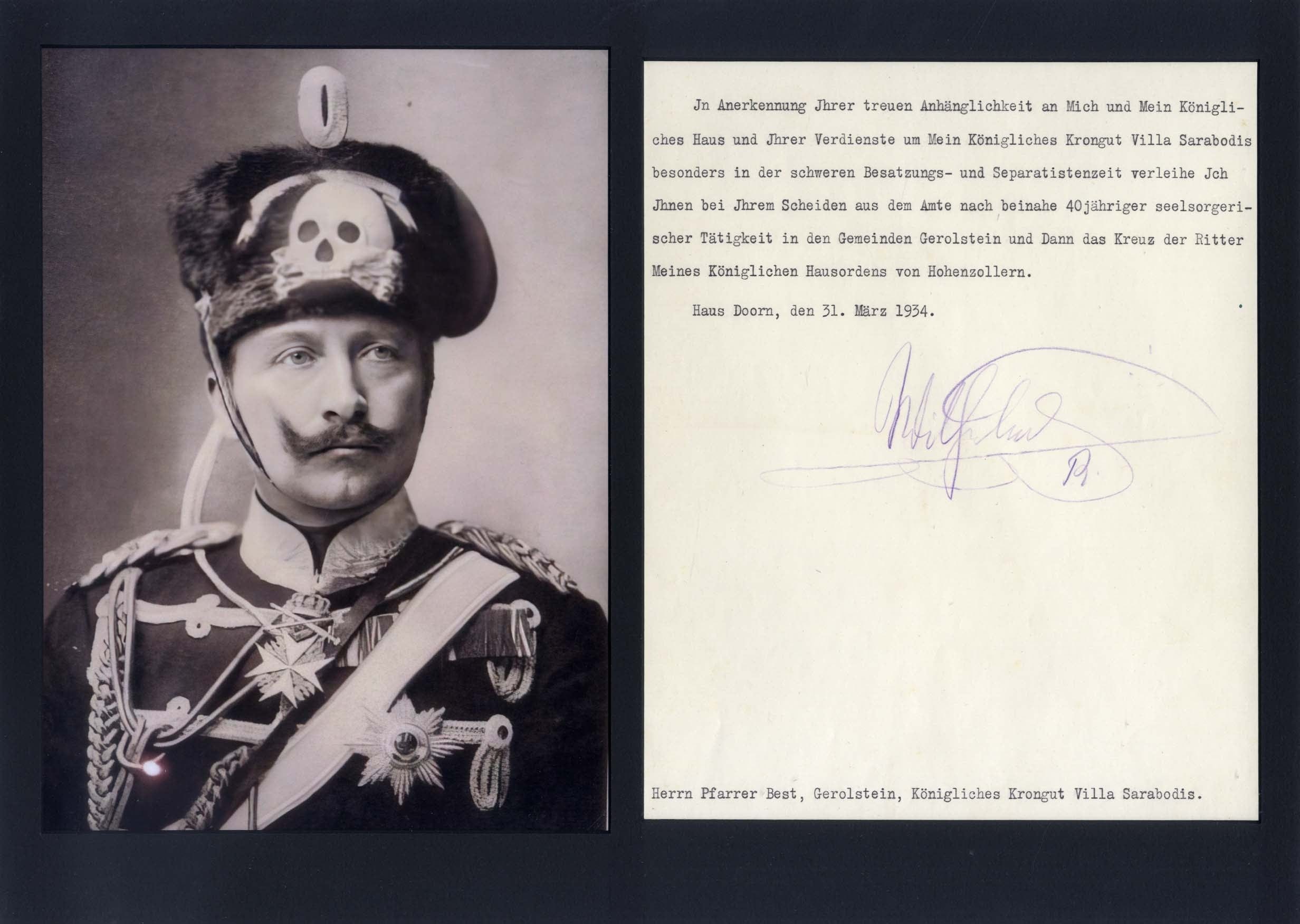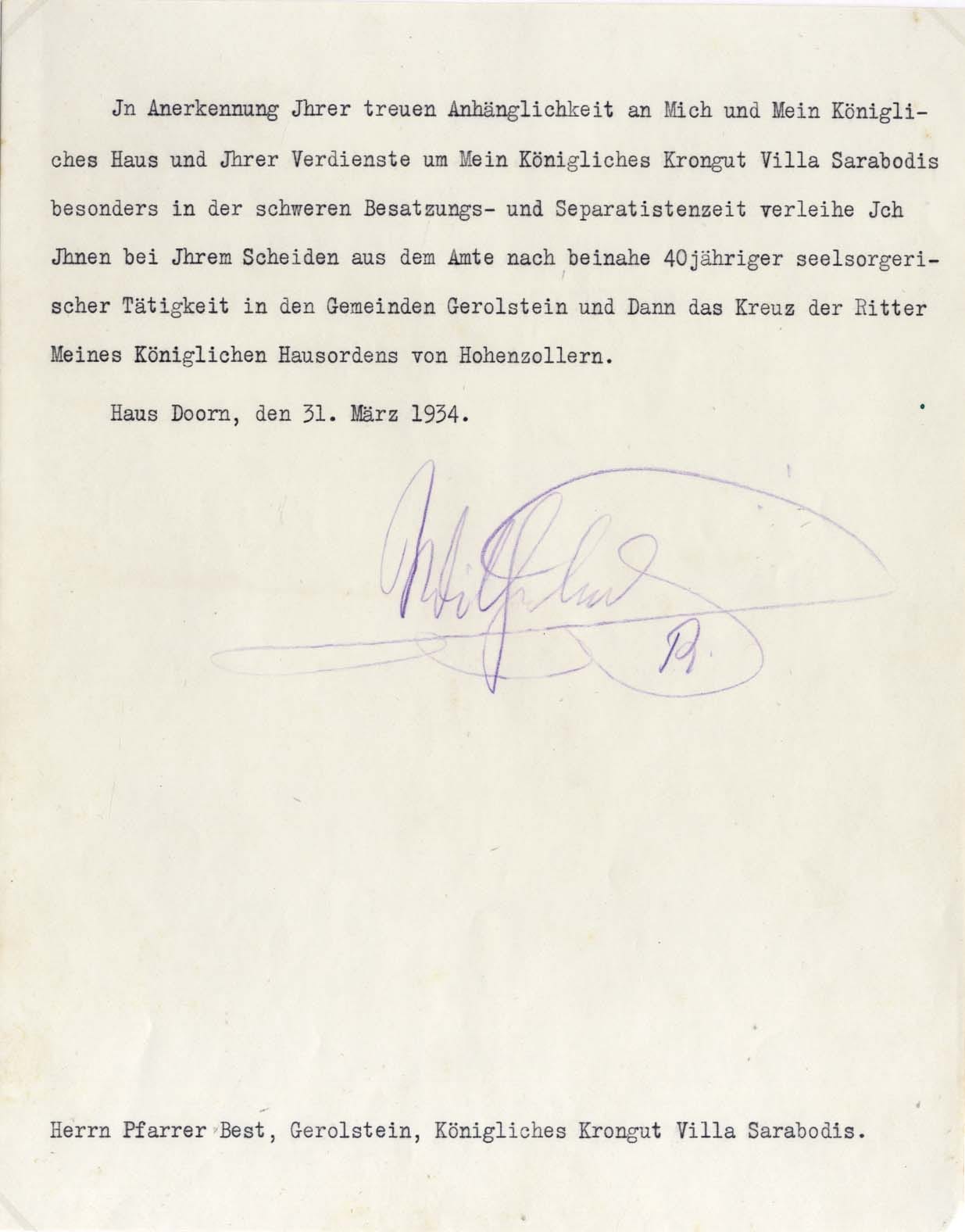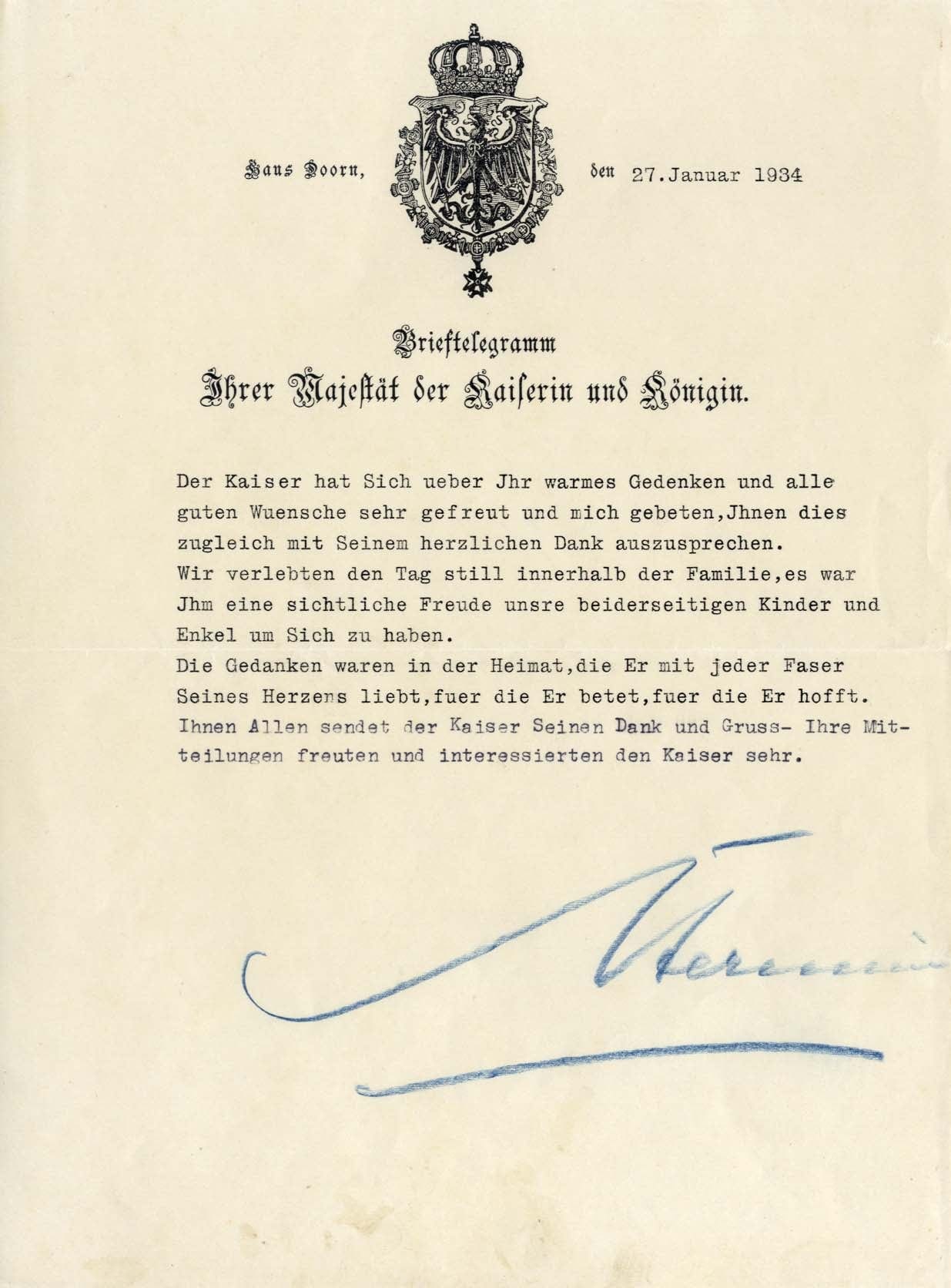Description
Typed letter signed, one page, 8,25 x 10,5 inch, Huis Doorn, 31.03.1934, in German, Wilhelm II awards Pastor Best the "Kreuz der Ritter seines Königlichen Hausordens von Hohenzollern"*, signed in dark pencil "Wilhelm I.R.", attractively mounted (removable) for fine display with a picture, shows Wilhelm II in a beautiful chest-up portrait in uniform (altogether 16,5 x 11,75 inch), with very mild signs of wear - in nearly very fine condition. Accompanied by a typed letter signed by Hermine Reuss of Greiz, one page, 8,25 x 11 inch, personal stationery, Huis Doorn, 27.01.1934, in German, thank-you letter to an unnamed correspondent, signed in blue pencil "Hermine", with very mild signs of age wear - in nearly very fine condition.
"In Anerkennung Ihrer treuen Anhänglichkeit an Mich und Mein Königliches Haus und Ihrer Verdienste um Mein Königliches Krongut Villa Sarabodis besonders in der schweren Besatzungs- und Separatistenzeit verleihe Ich Ihnen bei Ihrem Scheiden aus dem Amte nach beinahe 40jähriger seelsorgerischer Tätigkeit in den Gemeinden Gerolstein und Dann das Kreuz der Ritter Meines Königlichen Hausordens von Hohenzollern."
Translated:
"In recognition of your faithful devotion to me and my royal house and your services to my royal crown estate Villa Sarabodis, especially during the difficult period of occupation and separatists, I award you the Cross of the Knights of my Royal House Order of Hohenzollern upon your departure from office after almost 40 years of pastoral care Activities in the communities of Gerolstein."
* The House Order of Hohenzollern (German: `Hausorden von Hohenzollern or Hohenzollernscher Hausorden`) was a dynastic order of knighthood of the House of Hohenzollern awarded to military commissioned officers and civilians of comparable status.
Further Information on the person
Profession:
(1859-1941, Wilhelm II) last German Emperor (German: Kaiser) and King of Prussia, reigning from 15 June 1888 until his abdication on 9 November 1918 & (1887-1947, Hermine) Second wife of Wilhelm II.
Year of Birth: 1859
Certificate of authenticity
All of our pieces are sold with a Certificate of Authenticity. If a piece turns out to be wrong or if you do not like an autograph, you will get your money back for a lifetime.
Payment & Security
Your payment information is processed securely. We do not store credit card details nor have access to your credit card information.



